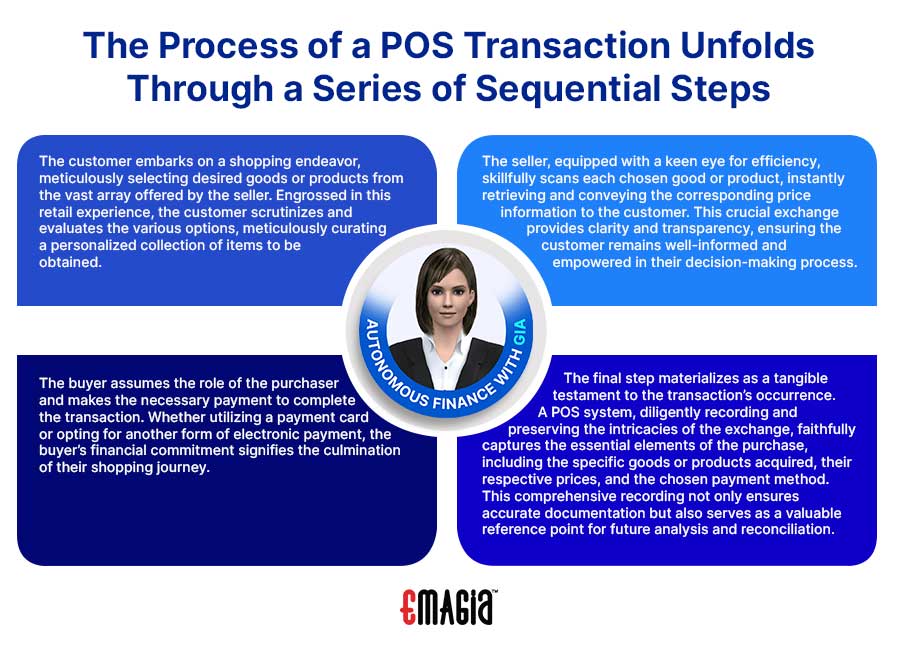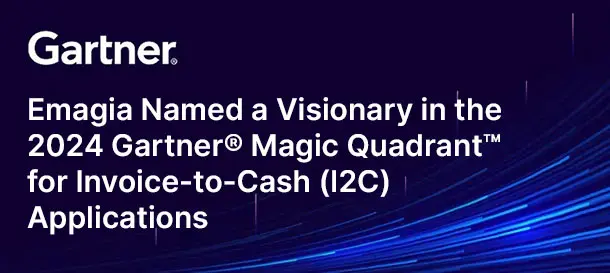Point of Sale (POS) transactions have revolutionized the way businesses conducts their sales and interact with customers. In a rapidly evolving digital landscape, POS transaction serves as the pivotal link between the buyer and the seller, facilitating seamless and secure payment processes. Whether it is a physical retail location or an online platform, POS systems play a crucial role in capturing transaction details, processing payments, and recording important data for analysis and decision-making. This introduction explores the fundamental concepts and significance of POS transactions, highlighting their impact on businesses and consumers alike.
What is POS (Point of Sale) Transaction?
In retail, a point of sale transaction signifies the pivotal moment when a customer engages in a purchase at a tangible brick-and-mortar store, employing either a payment card or an alternative electronic payment method. Within this exchange, a profound shift occurs, as the transaction becomes indelibly etched into the annals of the retailer’s infrastructure. Thai significant event is meticulously documented and logged by a sophisticated point of sale (POS) system, which diligently captures and preserves all the pertinent information surrounding the purchase. These details encompass a comprehensive record of the specific item(s) procured by the customer, their respective prices, and the chosen payment method, ensuring an accurate and reliable account of the transaction’s essential components.

How Does a Point of Sale Transaction Work?
The process of a POS transaction unfolds through a series of sequential steps, ensuring a seamless exchange between a customer and a seller.
- The customer embarks on a shopping endeavor, meticulously selecting desired goods or products from the vast array offered by the seller. Engrossed in this retail experience, the customer scrutinizes and evaluates the various options, meticulously curating a personalized collection of items to be obtained.
- The seller, equipped with a keen eye for efficiency, skillfully scans each chosen good or product, instantly retrieving and conveying the corresponding price information to the customer. This crucial exchange provides clarity and transparency, ensuring the customer remains well-informed and empowered in their decision-making process.
- The buyer assumes the role of the purchaser and makes the necessary payment to complete the transaction. Whether utilizing a payment card or opting for another form of electronic payment, the buyer’s financial commitment signifies the culmination of their shopping journey.
- The final step materializes as a tangible testament to the transaction’s occurrence. A POS system, diligently recording and preserving the intricacies of the exchange, faithfully captures the essential elements of the purchase, including the specific goods or products acquired, their respective prices, and the chosen payment method. This comprehensive recording not only ensures accurate documentation but also serves as a valuable reference point for future analysis and reconciliation.
What are the Point of Sale (POS) Features
In the course of its operations, a business accumulated a wealth of data encompassing various elements such as sales, returns, customer loyalty, popular products, seasonal preferences, underperforming items, reorder thresholds, low inventory levels, exceptional employees, and the frequency of returning customers.
This valuable data can be effectively compiled and organized through the utilization of an efficient POS system. By leveraging this compiled data, management gains the necessary insights to make pivotal decisions pertaining to inventory management, marketing strategies, employee allocation, and nurturing customer relationships.
An efficient POS system or software plays a vital role in seamlessly integrating the data from various aspects of a business. This integration is particularly significant for a brand that operates multiple stores across different cities, as it enables the compilation of comprehensive data from both the stores and warehouses.
The POS terminal is comprised of essential components including a server, desktop, credit/debit card swiper, cash drawer, and a bill printer.
The POST installation company takes charge of configuring your system, encompassing both the hardware and software components.
With the advent of mobile or tablet point-of-sale POS systems, the ability to make payments for purchases within a store or restaurant extends beyond conventional wire setups. This newfound flexibility allows customers to settle their bills anywhere within the establishment without being constrained by physical wiring.
What are the Point of Sale (POS) Examples
POS systems are prevalent in various real scenarios, as exemplified by our everyday experiences. For instance, when making an online shopping order on platforms like Amazon, the utilization of POS software enables us to securely and conveniently complete our purchases.
With the increasing adoption of cashless payment methods and the transformative impact of the Covid-19 pandemic, the global electronic point of sale (POS) market is projected to witness substantial growth.
Point of sale POS systems is commonly observed in various hospitality establishments such as cages, bars, and hotels. These establishments often utilize POS setups not only as payment counters for billing purposes but also as cloud-hosted POS software solutions like Toast POS.
Numerous merchants offer the option of POS financing, particularly when purchasing high-value items like diamond rings. POS financing allows customers to conveniently split their payments into manageable installments. Notably, Forbes highlights Affirm, Afterpay, and Klarna as well-regarded sources of POS financing, offering flexibility and convenience to consumers seeking alternative payment solutions.
What are the Different Types of Point of Sale (POS) Transactions?
Online POS transactions refer to the act of a buyer acquiring goods or services through online platforms. For instance, a buyer who is logged into the Amazon app may select specific jewelry items for purchase. Upon completing the payment using a card or digital wallet, the POS transaction is duly recorded.
Offline POS transactions occur when a buyer physically visits a store to make a purchase of goods. Unlike online transactions, the buyer and seller engage in face-to-face interaction, and the payment is made directly in cash at the time of the transaction. This instantaneous exchange allows the seller to receive the cash immediately, eliminating the need for any further processing or waiting periods.
Return of Product: There are instances where a buyer may desire to return a product due to concerns regarding its quality or other related issues. In such cases, a request for reversal is initiated and forwarded to the card-issuing bank. Depending on the circumstances, the reversal of payment can be either partial or complete, depending on the specific terms and conditions set forth by the bank and the nature of the return request.
What are the Point Of Sale (POS) Advantages
By encompassing sales and inventory tracking functionalities, this system offers valuable insights into your daily revenue. Not only does it enable you to monitor and analyze your sales performance, but it also provides timely information about stock levels, ensuring that you are aware of when to initiate the process of reordering inventory.
Through the analysis of customer, sales, employee, and inventory data, this system generates comprehensive reports. These reports serve as valuable tools for decision-making and strategy development. For instance, they allow businesses to identify their highest-selling items, enabling effective marketing strategies to further drive sales and ensure that these popular items remain adequately stocked to meet customer demand.
This system proves advantages in enhancing customer communication and cultivating strong customer relationships. By maintaining up-to-date information on regular buyers, businesses can leverage this data to establish loyalty programs.
The automation provided by this system streamlines and expedites the management of company paperwork, resulting in significant time savings. Additionally, this automation helps minimizes wattage and reduces costs associated with manual paperwork, contributing to overall cost savings for the company.
Conclusion on POS:
POS transactions have emerged as an indispensable component of modern commerce. With the ability to seamlessly process payment, capture vital transaction data, and facilitate efficient customer interactions, POS systems have transformed the way businesses operate. From traditional brick-and-mortar stores to e-commerce platforms, POS transactions provide convenience, security, and real-time insights into sales and inventory management.
Additionally, POS systems enable businesses to streamline operations, enhance customer experiences, and make informed decision based on valuable data analysis. As technology continues to advance, POS transactions will continue to evolve, shaping the future of commerce and further revolutionizing the way we buy and sell goods and services.
FAQs:
How Do I Record POS Transactions?
You should create an invoice voucher to record any transactions.
How is a POS Payment Processed?
The client should put their phone over the card terminal.
What is the definition of a POS Adjustment?
It is a refund of payment at a POS when clients give back purchased products.
What Happens When a POS Transaction Fails?
If the card is blocked or if there are network issues, a POS transaction can fail.
Can POS Transactions be Reversed?
Reversals can happen on POS transactions if there are errors in them.




